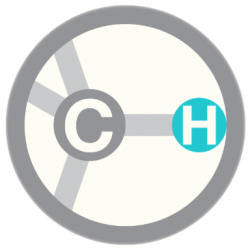Authors: Michael A. Nader, Kathleen A. Grant, Huw M. L. Davies, Robert H. Mach and Steven R. Childers
J. Pharmacol. Exp. Therap.,
1997, 280, 2, 541-550
2β-propanoyl-3β-(4-tolyl)-tropane (PTT), is a cocaine analog that inhibits dopamine uptake, binding with high affinity and selectivity to the dopamine transporter. In the present study, the behavioral effects of PTT were evaluated in two models of cocaine abuse: drug self-administration and drug discrimination. In the first experiment, rhesus monkeys (n = 3) were trained to self-administer cocaine (0.03 and 0.1 mg/kg/injection, i.v.) under a fixed-interval 5-min schedule. Presession administration of PTT (0.03–0.3 mg/kg, i.v.) or cocaine (0.3–3.0 mg/kg, i.v.) were evaluated. At both self-administered doses of cocaine, PTT decreased response rates and total session intakes and was approximately 0.5 to 1.0 log units more potent than cocaine. In experiment 2, the reinforcing effects of PTT (0.003–0.1 mg/kg/injection) were evaluated in a separate group of monkeys (n = 4) responding under a fixed-interval 5-min schedule of cocaine (0.03 mg/kg/injection) presentation. When substituted for cocaine, PTT maintained response rates similar to saline-maintained rates and significantly lower than rates maintained by cocaine (0.003–0.3 mg/kg/injection). Total session PTT intake was significantly lower than cocaine intake. In experiment 3, the discriminative stimulus effects of PTT (0.003–0.1 mg/kg, i.m.) were evaluated in monkeys (n = 3) trained to discriminate cocaine (0.2 mg/kg, i.m.) from saline (0.5 ml). PTT substituted for cocaine in a dose-dependent manner and was 0.5 to 1.0 log units more potent than cocaine. At the highest PTT dose, cocaine-appropriate responding was observed 8 to 24 hr after the injection. These results demonstrated that the long-acting indirect dopamine agonist PTT was effective in decreasing cocaine self-administration and in abuse liability testing showed a unique behavioral profile, not functioning as a reinforcer when substituted for cocaine and producing discriminative stimulus effects similar to cocaine.

